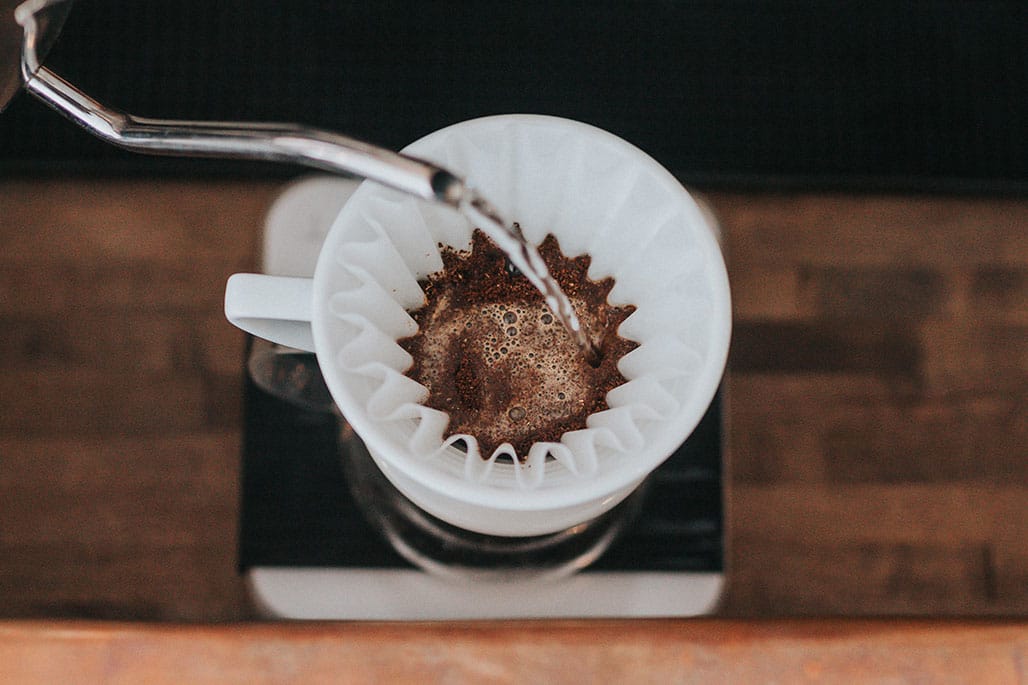What Is a Coffee Bloom?
![]() Maryna Gray
• October 08, 2021
Maryna Gray
• October 08, 2021
Ever heard the fancy phrase, “coffee bloom,” and wondered what it means in reference to brewing? Read on to learn what causes a coffee bloom, what it says about your beans, and what it means if your coffee doesn’t bloom at all.

What Is a Coffee Bloom?
A coffee bloom occurs when hot water comes in contact with coffee grounds, releasing carbon dioxide and causing the mixture to expand and bubble up. The release of CO2 is a good sign, as it means your coffee is fresh; without carbon dioxide, coffee beans will oxidize and become stale.
Coffee can bloom with any brew method, from the classic drip machine to a pour over method. For obvious reasons, you’ll be able to see it best when using something like a Chemex or Hario V60.
When using a pour over brew method, be sure to lean over, get your nose nice and close to the coffee grounds, and experience the aromas your coffee is releasing. Professional cuppers always smell the coffee as it blooms, and the scent of the bloom can be a wonderful precursor to the flavors you’ll taste once it’s ready to serve.
What If My Coffee Doesn’t Bloom?
Pre-ground coffee degasses more quickly, increasing the chances of oxidation and decreasing the chances your coffee will bloom. You can prevent oxidation in three ways:
1. Always buy fresh coffee beans.
2. Store the beans in an airtight container or bag with a one-way valve (like all 1.8-ounce Bean Box bags!), which pushes excess air and moisture out of the bag to preserve the CO2 and ultimately, the shelf life, of the beans.
3. Grind your coffee beans (preferably with a burr grinder) right before you brew. If you’ve never used a burr grinder, we recommend starting with the Baratza Encore or Breville Smart Grinder Pro.
It’s important to note that the lack of a coffee bloom doesn’t necessarily mean you’ll have a bad cup of coffee; a bloom is just one of many ways to assess the freshness and quality of your beans. Also keep in mind that the roast level and varietal of a coffee can affect how much it blooms; for instance, dark roasts degas faster than light roasts.
How to Bloom Coffee
After you’ve poured your freshly ground coffee into your preferred coffee maker, use a gooseneck kettle to pour hot or off-boil, not boiling water (typically 195 to 205 degrees) over the grounds, starting in the center and working your way out in a slow, circular motion until the coffee is evenly saturated, but not soaking wet. If your beans are fresh, you’ll most likely begin to see a small collection of bubbles forming. Congratulations, you’ve just watched your coffee bloom!
Most pour over recipes will instruct you to let the coffee bloom for about 30 seconds and then continue to add water as directed. The amount of water you need will depend on your brew method; use our coffee calculator to determine your ideal ratio.
The Bottom Line
The coffee bloom isn’t essential, but it does set the stage for a better cup. And aside from the technicalities, watching and smelling your coffee bloom is a great way to find a moment of Zen before you begin your day.
Posted in: Coffee Questions
We want to help you make better coffee at home. Our recommendations are our own, and never sponsored. If you see something you love and buy it through our links, we may receive an affiliate commission (thanks for that!).


